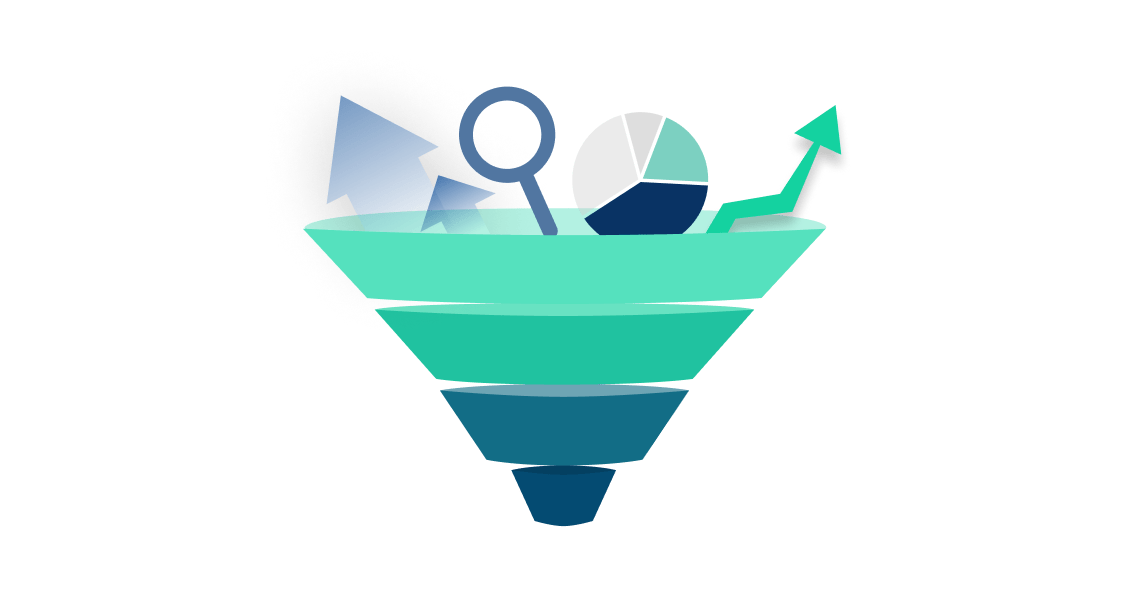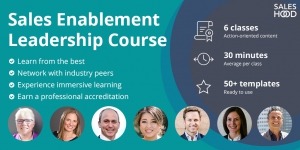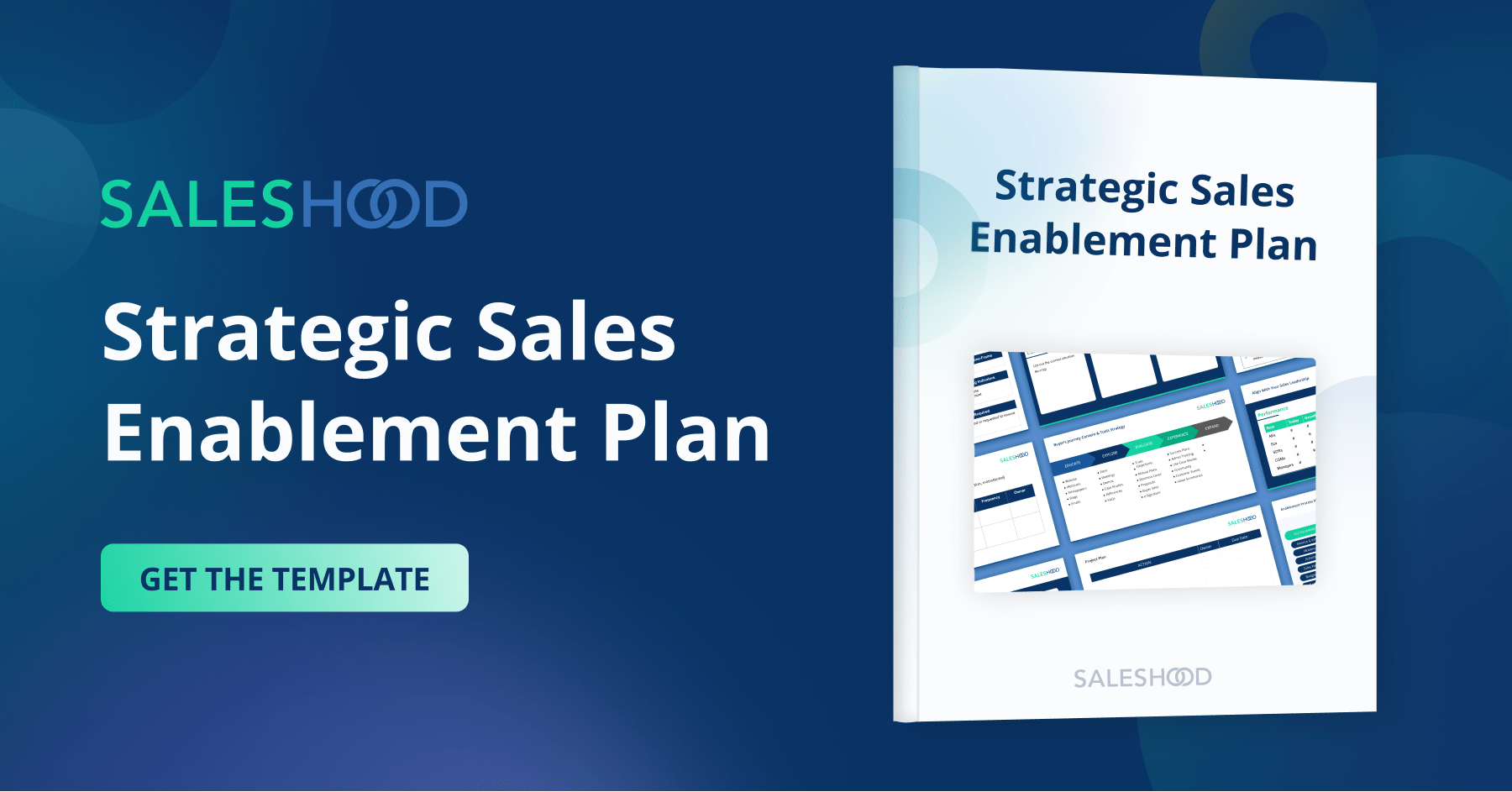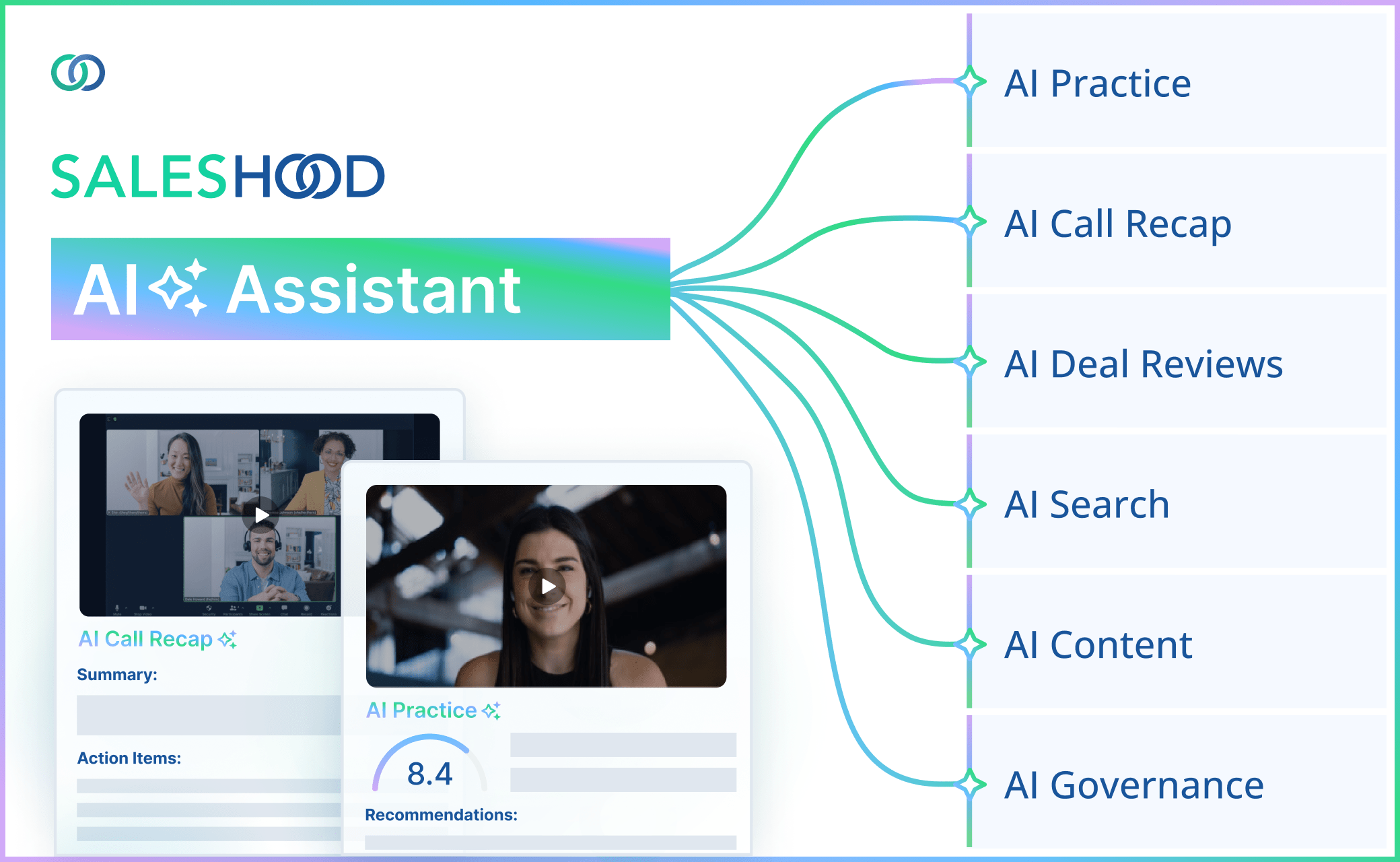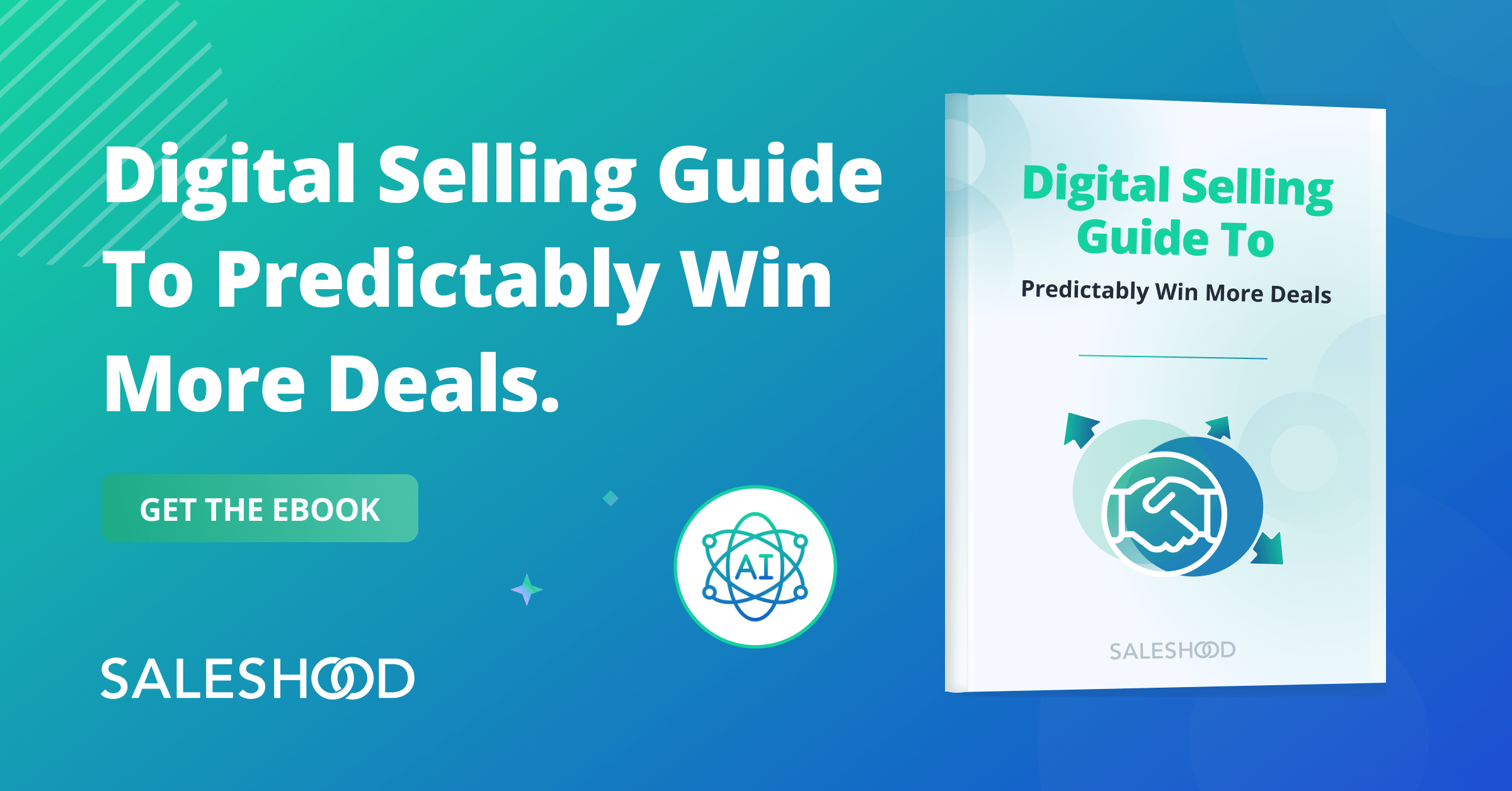The Evolution of Sales Enablement Strategies
How aligned is your sales enablement strategy with your sales and marketing leaders’ top go-to-market priorities? It’s time to be proactive and refresh your sales enablement strategy. Sales Enablement managers should always prioritize keeping their sales enablement strategy and team charter current and clearly communicated to stakeholders.
In SalesHood’s Sales Enablement Leadership Course, Sheevaun Thatcher, the former VP of Global Digital Learning and Enablement at RingCentral shares what it takes to bring a strategic approach to sales enablement. Keep reading to find an overview of strategic sales enablement and expert advice on implementing this in your organization.
Sales enablement is an essential strategy for many companies, but the field has changed dramatically in the past decade. As technology and sales evolve, the process of equipping your salespeople with vital knowledge, messaging, and tools also needs to evolve to match expectations.
What was once a process centered on providing product training and marketing collateral is now a more involved endeavor that supports all aspects of your sales organization. That’s where strategic sales enablement comes in. But how do you make this a reality for your company?
In this blog, we’ll share an overview of strategic sales enablement, along with insights from Sheevaun Thatcher, a world-class sales enablement leader.
What Does Strategic Enablement Mean?
Sales enablement is the process of aligning a sales organization around the customer and empowering your team to connect with them. Strategic sales enablement is the specific approach your company takes to provide the right content, in the right format, at the right time to help your sellers sell.
What Is the Goal of Sales Enablement Strategies?
Good sales enablement strategies drive revenue. The goal of sales enablement is to equip your sales team with the content, training, coaching, and technology they need to sell effectively. Achieving success with sales enablement can be challenging because every team is different. Leaders have to step up and dig into what their reps and customers need.
Each piece of sales enablement content you build and deploy needs to move your buyers through their unique buyer journey, from lead acquisition through close. More importantly, your sales reps need to understand the pathway. This requires constantly asking questions like: What are my buyers looking for? How can I provide them with highly personalized experiences? What are best practices for moving my prospects further down their path to purchase?
Knowing the answers to questions like these isn’t easy in an ever-changing environment. Your sales enablement strategy must include tools and resources to support your sellers so that they understand the right steps to take. Your goal is to empower each seller on your sales team to make the best possible decisions.
Four Things You Need to Develop a Sales Enablement Strategy
There’s no elevator to the top, you have to take the stairs, and Sheevaun took them all, for a number of years. She knew she needed to find a company that was looking to create some kind of enablement function to truly make an impact. Now, the sales enablement team leverages SalesHood to help support their sales enablement goals.
During the process of building a strategic sales enablement plan for the sales team, Sheevaun learned some key components and insights about what it takes to elevate a company’s sales strategy through sales enablement. Four key components are discussed below.
1. Executive Buy-in
You can have the best ideas, team, and products in the world, as well as incredible support. Still, if you don’t have a solid partnership with your stakeholders, it isn’t going to work. You need to have them on board before you build out your process.
2. Sales Skills and Competencies
There are sales skills that you can build over time, but there are several at the core of sales enablement that are must-haves. Focus on building out the foundational sales skills before turning to the more advanced sales enablement skills and strategic sales enablement skills. This ensures you have a sales team with a strong starting base and that each set of skills can come from the prior set, much like taking an introductory sales class to gain the basics before jumping to more accelerated learning paths.
Foundational Sales Enablement Skills:
- Communicating
- Content creating
- Facilitating
- Being a team player
- Confidence
- Authenticity
- Execution
- Trust
Advanced Sales Enablement Skills:
- Writing
- Curriculum creation
- Storytelling
- Coaching
- Listening
- Achieving
- Motivating others
Strategic Sales Enablement Skills:
- Speaking
- Program strategy
- Executive gravitas
- Understanding metrics & KPIs
- Strategic planning
- Culture building
- Ability to be a visionary
3. Having The Confidence to Improve Sales
True strategic sales enablement pushes you beyond where you are right now. You have to get down to business and be willing to ask yourself questions about the state of sales today, the desired state of sales for the future, and the objectives you want your sales team to impact and accelerate for the business.
These questions may include:
- What are your sales metrics and KPIs?
- What are the sales or business outcomes?
- How are we moving the needle?
- What can we do to help sales and team performance improve?
You also need to believe that you are good at what you do. When you believe it, you’re knowledgeable and you walk into that room, people can feel it. This makes it easier for others to connect with you and believe in what you’re bringing to the table.
4. Knowing Why You Should Build A Sales Enablement Strategy
For strategic sales enablement to be effective, you need information to help sales reps align with their customers. What kind of challenges are you trying to solve? What is your customer-facing right now and what are their pains? Specifically, one of Sheevaun’s favorite questions to ask is: What does a year from now look like?
“I love asking this question. It’s a year from now and you’re on stage getting an award. What is that award? That will tell you more about the individual that you’re talking to than almost any other questions you can ask. That will tell you what drives them. Once you can figure out what drives them, you can figure out what you can do to support that.”
This context is critical to helping your sales team have more productive conversations. Organizations with sales enablement achieve a 49% win rate on forecasted deals, compared to 42.5% for those without.
It also helps your marketing team create content that makes sense and acts as an answer to the “why” you uncover. That way, your sales team actually leverages the assets that their colleagues in marketing spend so much time creating.
What Are the Pillars of Sales Enablement?
Sales enablement has many different components. Building a process that works for your organization requires you to evaluate what’s working right now and what isn’t. Then, you can fill in the gaps and better support your sellers.
Here are the key components you need to have your eye on if you want to take a strategic approach to sales enablement.
Sales Training
Any learning initiative that’s designed to improve the sales skills of your reps can be part of your sales training. The goal is to learn a better approach to interacting with potential customers, as well as the principles of selling. While it may seem basic, it’s more important than many people realize. Research shows that most sales professionals forget at least 50% of what they learn in training programs in less than five weeks; 84% of that knowledge is lost after 90 days.
You can tailor sales enablement programs to meet the specific needs of a business, or give sellers a variety of courses to complete as they become relevant. Sales training programs should cover not only the mechanics of sales but also the psychological elements that play into buyer behavior. By ensuring that all reps and managers are up-to-date on sales techniques, businesses can build a more effective sales program and hit their numbers.
Sales Content Management
This is a system for developing, storing, and sharing your sales assets. The sales assets can be created by marketing or product teams—or even by your sales reps themselves—and they contain content such as presentations, spreadsheets, case studies, demos, scripts, or any other resource that a seller might need when interacting with a buyer. But, to make the most of all of this content, sales teams must know where and how to access it.
Sales Metrics and Data
You can put together a great sales program, but numbers don’t lie. Reviewing metrics helps sales leaders identify areas where they need to focus their efforts, predict future trends, and measure individual performance.
This also helps you refine your sales enablement initiatives over time. You can use real-time sales data and the insights you collect to adapt to what’s happening in your business and with your customers. The information you gather will help you build out even better sales training programs. Using sales enablement software can help you to easily track and measure your sales enablement analytics.
Sales Coaching
Knowledge and content are both good, but for salespeople to achieve their goals, they need guidance. Coaching sessions that focus on your sales team’s specific needs, strengths, and weaknesses play an important role in helping them make progress.
You want to provide a clear picture of what sellers are doing well and how they can improve. Just a few simple shifts in process can be all that’s necessary to make a difference. You can read more about effective sales coaching and leveraging data in our Enabling Managers to Coach With Data blog post.
When you can tell the story of why you care, your purpose, and why sales enablement is what you do, you can help people to understand the power of your approach. Breaking down this complex concept and creating partnerships within your organization is what’s necessary to drive sales forward.
Putting It All Together: Writing Your Charter
To solidify your sales strategy, it’s important to present the right plans and asks to secure more investment. Show that your programs will move the revenue needle and impact business outcomes.
This means covering questions such as:
- Who are your stakeholders and investors?
- What are the top priorities of your c-suite?
- How does your sales enablement program align with the priorities of your top executives and the go-to-market strategy?
- What are the top sales metrics and KPIs to benchmark, measure, and correlate?
You can use the answers to deliver a compelling statement that accurately describes the value of your sales enablement initiative to stakeholders and investors.
Sheevaun Thatcher shares: “Having a charter is critical for time management, personnel management, and GTM alignment. You can focus and you can share your focus and direction with others. It cuts down significantly on the requests to fix EVERYTHING regardless of whether they are the right fixes for the business.”
Sales Enablement Strategy Key Takeaways
Sheevaun goes into more detail about all of the topics in this blog post in our Sales Enablement Leadership Course. Read some of the key takeaways enablement practitioners our learners walked away with after taking the course.
“Enablement requires knowledge of leadership’s goals and the ability to tailor the message to facilitate buy-in. This is challenging, but leadership must drive the change they wish to see and be the hammer when needed.”
– Meredith Luker
“The progression of skills and competencies at each level was interesting to see from a career progression standpoint. And the concept of a career path being a jungle gym was an interesting perspective.”
– Keith Bradt
“Partnerships from ALL levels are vital, especially the sales leaders supporting the relationship. You also need to speak the language of the customer at every level of the organization. Figure out their drivers and speak to them.”
– Kimberly Shernoff
More Sales Enablement Resources
Looking for more expert insights on sales enablement? Check out these pieces of content from our team next.
What Is Sales Enablement? – Click to read
6 Pillars of Intentional Sales Strategy and Enablement – Click to read
Measuring Leading vs. Lagging Indicators – click to read
Sales Enablement Leadership Course – Sign Up
